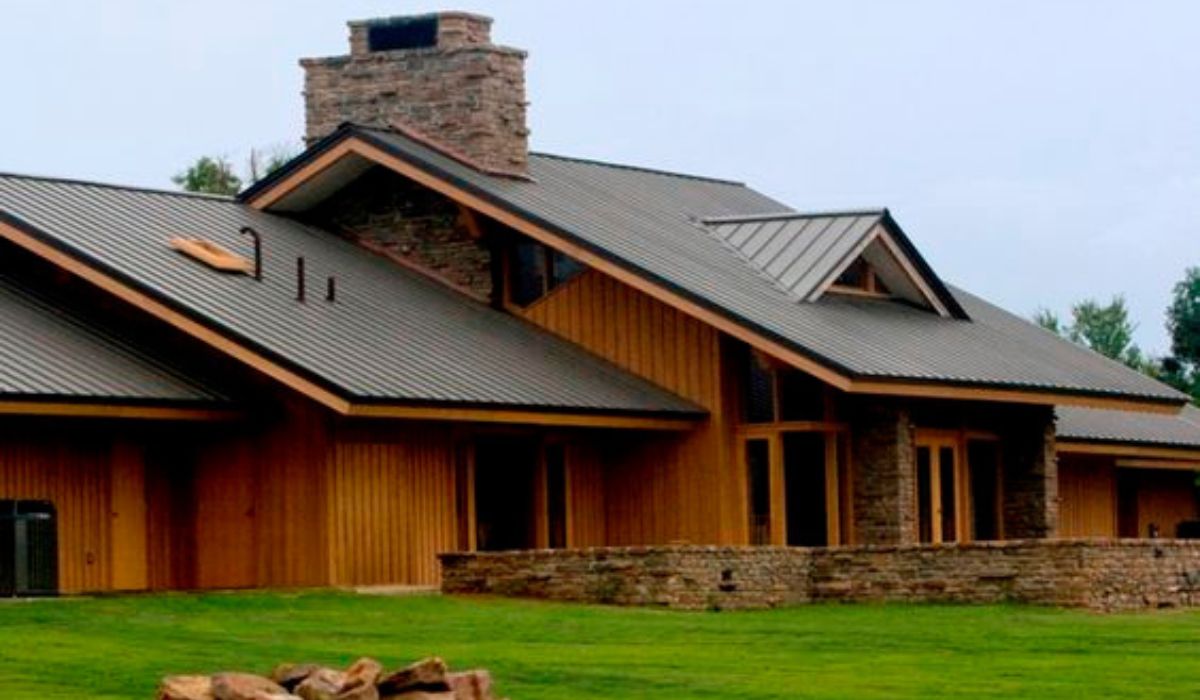
Have you ever thought about what makes your roof solid? It’s not just layers of shingles and support beams. The roof is made of many parts, each doing its job to keep your house safe. Every part, from the decking to the flashing has a key role.
In this article, we’ll look at the important parts of a roof. We’ll show you how roofs are built and why each piece matters. It’s a chance for homeowners to learn more and for anyone curious about roofs.
Key Takeaways:
- Understanding how your roof is put together helps homeowners with care and decision-making.
- The roof’s base, the decking, is usually made from wood and supports the roof covering.
- Extra protection like underlayment and water shields keep water out and your home dry.
- Important parts like starter shingles and edges maintain the roof’s strength and life.
- Roofing comes in many types, each with its benefits and things to consider.
Roof Decking
Roof decking, or roof sheathing, is key to every strong roof. It’s made from tough wooden boards. This decking is put on top of rafters, joists, or trusses. It gives a firm base for the entire roof.
Its main job is making a flat surface for the roof’s water and roof materials like tiles or shingles. Roof decking supports the roof’s weight. It then moves it to the building’s main structure elements.
Roof decking is crucial for the roof’s structure. It spreads the roof’s weight evenly. This stops the roof from sagging, warping, or getting damaged. It keeps the whole roof safe and strong.
And, roof decking stops weather from getting inside. It adds a layer of defense against moisture and extreme temperatures. This makes the building a cozy and energy-efficient place.
Choosing the right roof decking is essential. It should fit the roof’s needs and the local weather. Plywood or oriented strand board (OSB) are common choices. They vary in strength, cost, and durability.
In short, roof decking is vital for a functional and lasting roof. With the right care, it keeps the roof sturdy and attractive. It stands tough against the elements.
Wooden boards for reliable support
Using top-notch wooden boards matters a lot. They offer the needed support for roof decking. They hold up well against all kinds of weather.
Underlayment and Ice and Water Shield
Underlayment is key in the roof system. It gives extra waterproofing and protection. It sits between the roof’s cover and the decking. This stops water from getting in and causing damage. The two main types are felt and synthetic.
Felt underlayment, or roofing felt, is the old-school pick. It’s made from natural stuff like wood fibers and bitumen. This gives it great water resistance. Felt underlayment is used a lot because it’s strong and doesn’t cost too much.
On the flip side, synthetic underlayment is the new kid on the block. It’s made from man-made materials like polyethylene. This makes it extra good at keeping water out. People like it for how well it resists tearing and the sun’s rays.
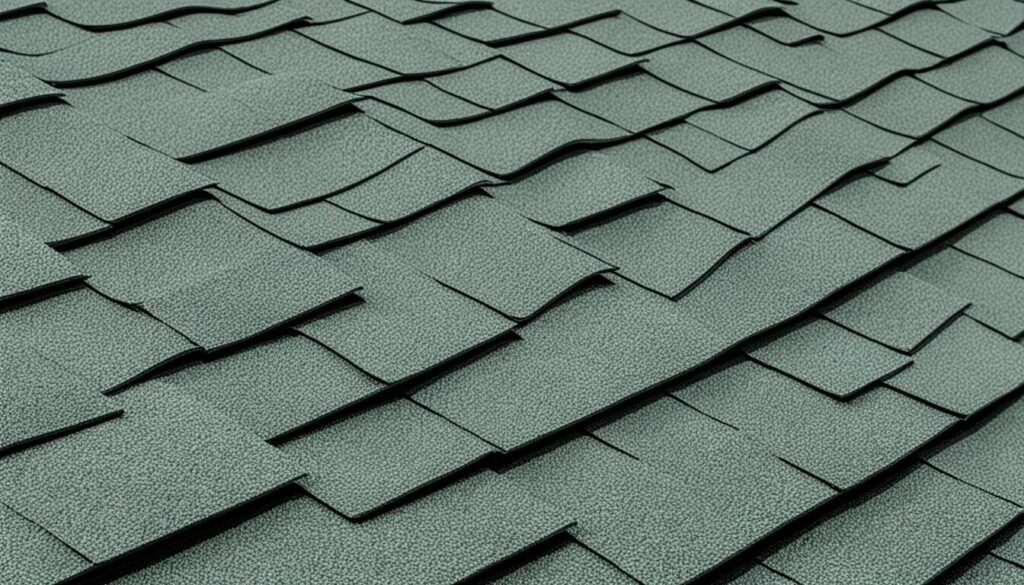
The ice and water shield is a must-have part of the underlayment. It helps a lot in areas that often get ice dams or a lot of rain. It’s made from a kind of bitumen that’s strong and can flex a lot.
This shield goes in spots that are likely to leak. Think of valleys and around things that stick out of the roof. It creates a seal that stops water from getting in or ice from building up.
Using underlayment and a shield like this can really help your roof. It keeps water out so your home stays safe and strong for a long time.
Starter Shingles, Fascia, and Drip Edge
Three key parts protect the roof: starter shingles, fascia, and drip edge. Each plays a big role in keeping your roof safe.
Starter Shingles: Wind Protection and Structural Support
Starter shingles go on the roof’s edges first. They stop wind from lifting the shingles and help the roof stay strong. In strong wind, roof edges are at risk. Starter shingles stop wind from lifting the shingles under them. This keeps the roof stable and safe.
Fascia: Support for the Bottom Row of Roof Tiles
Fascia is a board under the roof’s edge. It holds the bottom row of tiles up, so they don’t droop or fall off. But fascia isn’t just for holding things. It makes the roof look neat and complete. It joins the roof edge with the soffit, making your roof look good.
Drip Edge: Directing Water Safely Away
A drip edge keeps water from damaging your roof. This metal strip goes over the fascia. It makes sure water flows into the gutters, away from your roof. Drip edges are key to keeping water out. They stop leaks and avoid roof damage. Keeping water off your roof means it stays strong and lasts longer.
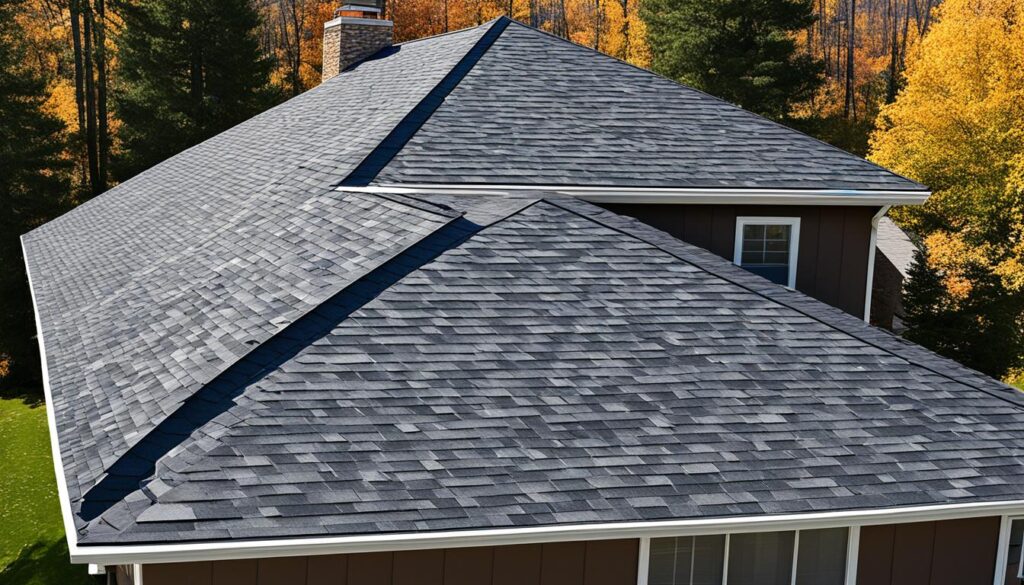
Roofing Materials and Roof Facets
The roof covering is key in any roofing system. It’s the first defense against the weather. You’ll find roof tiles, asphalt shingles, and metal roof panels as common choices for strong, weather-resistant roofs.
Roof tiles are chosen for looks and strength. They’re made of clay, concrete, or slate and keep a home warm. They also resist fire well. Asphalt shingles lead in the United States for roofing. They are budget-friendly and easy to put on rooftops. Choose from many colors and styles. And they stand up to all sorts of weather.
Metal roof panels last a long time and need little care. They’re tough, light, and help save on energy. You can find them in different looks, such as standing seam or corrugated.
Roof Facets
Roof facets mean the different slopes or pitches on a roof. Complex roofs have many. When replacing them, careful planning and fitting are needed to keep it leak-free.
Roofs with many facets need special care. Working with pros is key. They can handle each slope to prevent leaks and keep your roof strong. These jobs can be more complex and take longer. Adding flashing and other protections is vital for a dry home. It’s how you make sure the job is done right.
Picking the best materials and experts in roofing facets is necessary. This ensures a roof that lasts and looks great. Quality workmanship and materials are worth the investment.
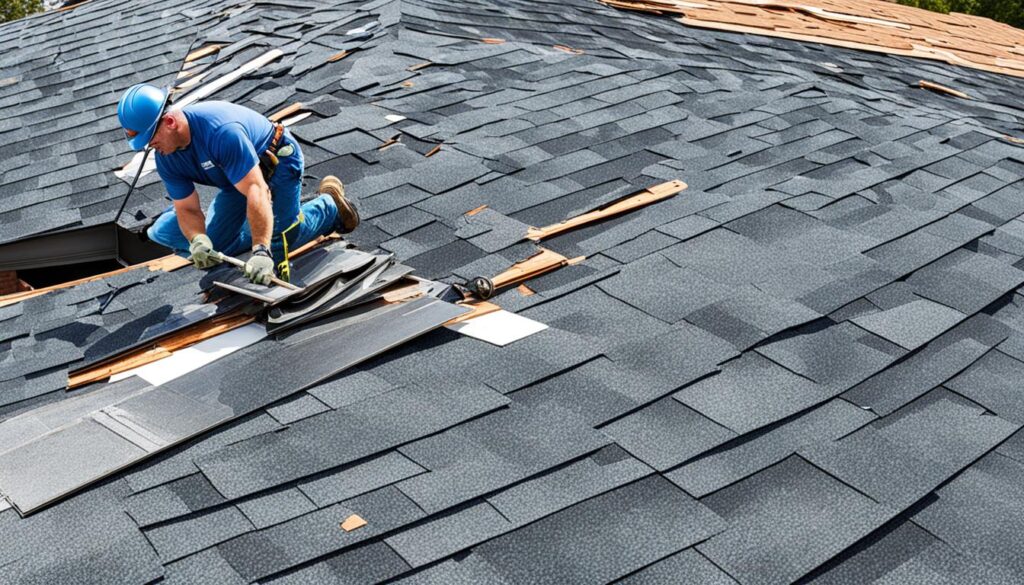
Roof Vents, Rafters, and Chimney
Roof vents are key for a good attic ventilation system. They make sure your attic gets the air it needs. This prevents moisture and too much heat, saving your roof and your home. A cool attic means less mold, longer lasting roof materials, and a generally healthier home.
Rafters are angled beams that hold up the roof’s inside part. They move the roof’s weight down to the walls. This gives your roof the support it needs, making it strong and stable. Strong rafters are essential to keeping your roof safe from bad weather and other outside pressures.
Dealing with rain on your roof is where gutters and downspouts come in. Gutters catch the rain, and downspouts carry it away safely. This stops water from hurting your property’s foundation. It’s very important to keep your downspouts clean, especially when it rains a lot.
The chimney lets out smoke and gas from fireplaces and furnaces. It’s critical for your home’s safety. A well-built and well-maintained chimney lowers the risk of dangerous chimney fires. Make sure to check and clean your chimney often to keep it working right.
Conclusion
It’s vital for homeowners to grasp their roof’s anatomy. This knowledge helps in making wise choices about upkeep, repairs, and enhancements. Each part is crucial for shielding against weather and boosting the roof’s life. When homeowners know their roof’s parts, they protect their home and its value. They ensure safety for many years ahead.
Recommended
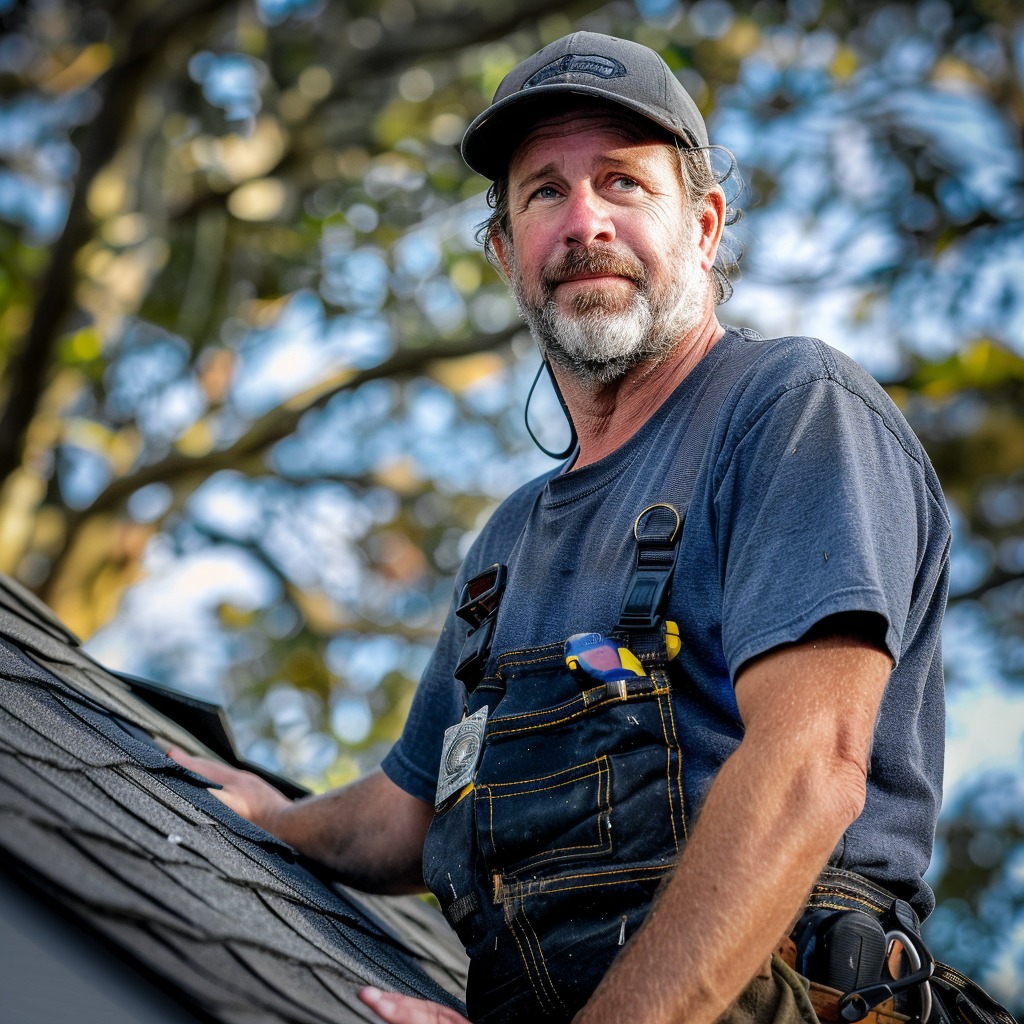
Meet William Adams, a seasoned roofing expert with over 30 years of hands-on experience in the industry. Having worked tirelessly under the scorching sun and through the fiercest storms, William brings a wealth of knowledge and expertise to the table. Hailing from the heart of the USA, he’s witnessed the evolution of roofing practices firsthand, mastering every aspect along the way. Now retired from the field, William spends his days cherishing time with his loved ones while sharing his invaluable insights through this platform. With William at the helm, you can trust that every tip, advice, and recommendation provided is backed by years of real-world experience and unwavering dedication to quality craftsmanship. Join us as we journey through the world of roofing, guided by the wisdom and passion of a true industry veteran.
